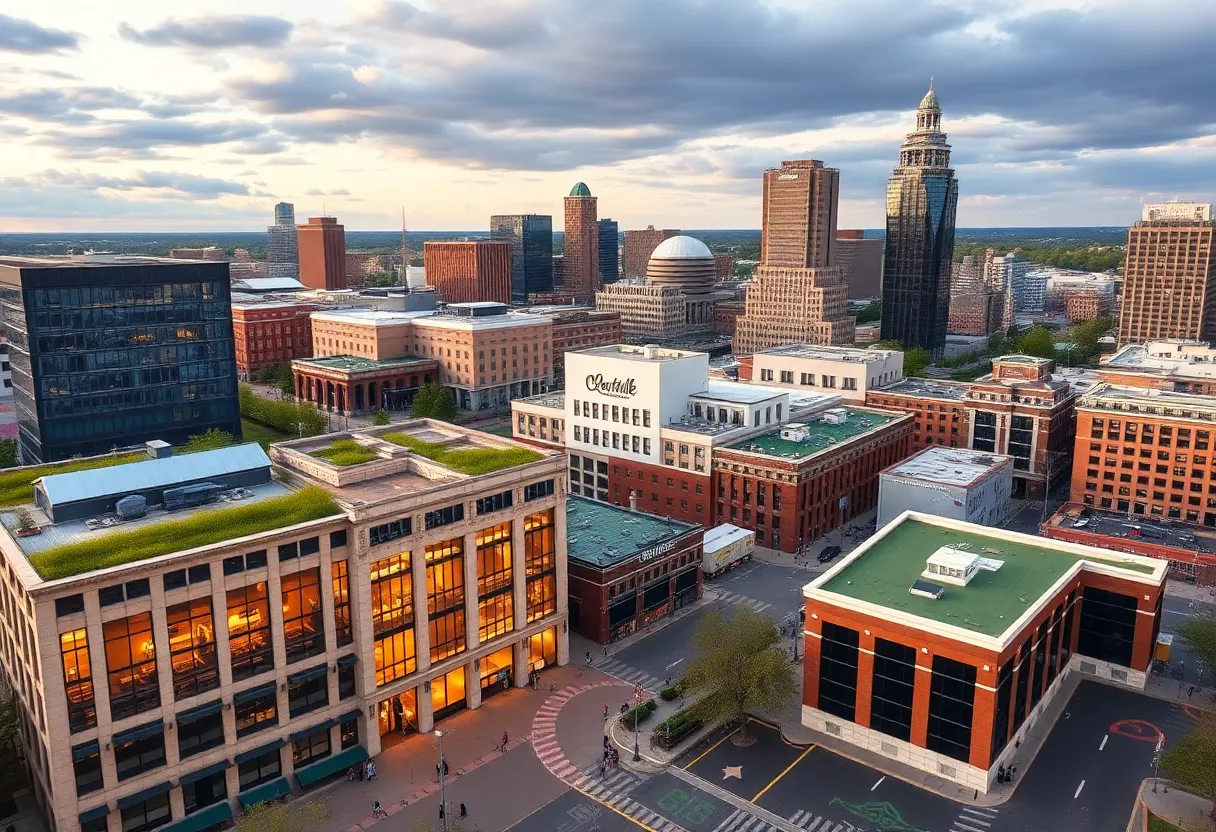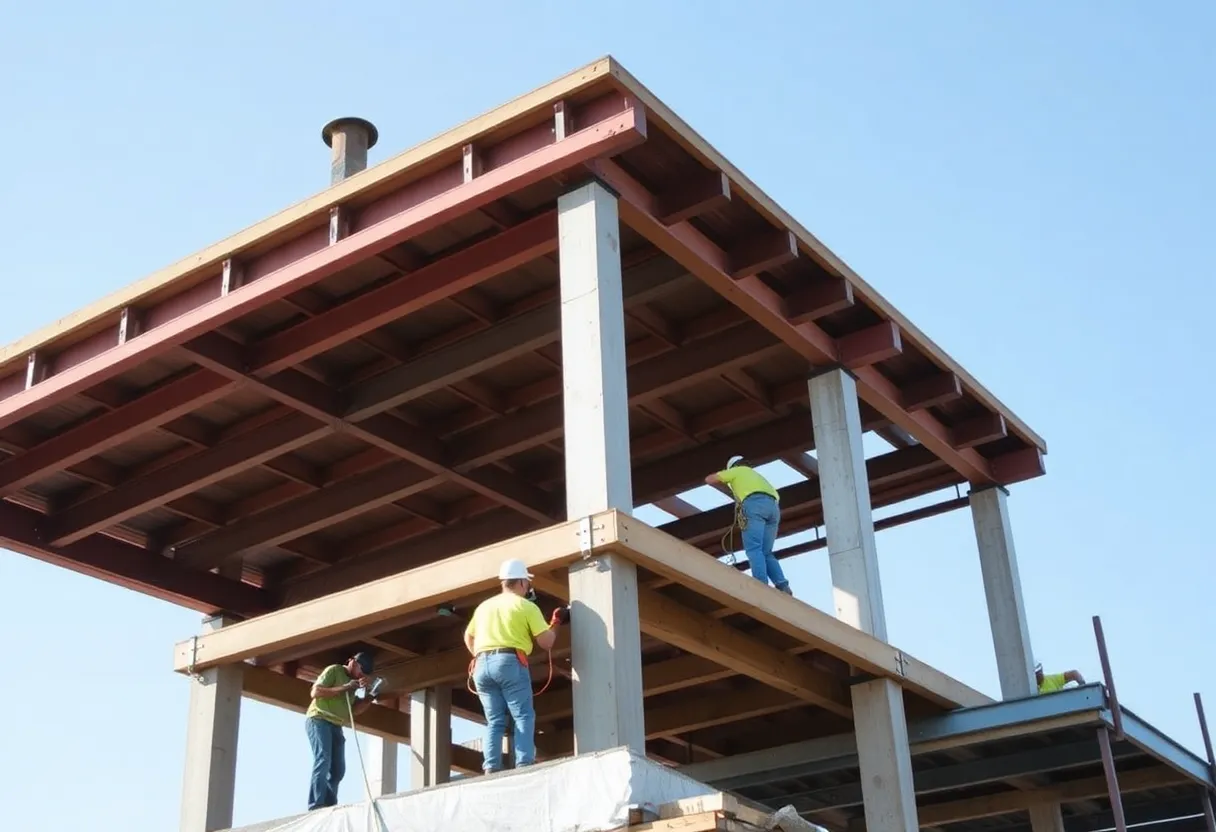Cincinnati, August 17, 2025
News Summary
CIG Communities secured a $56.4 million construction loan to convert a 27-story former office tower at 36 E. Seventh St. into Avant, a 162-unit apartment community. Construction is already underway on the landmark downtown site as part of a regional push to repurpose idle office stock and address housing shortages. The project joins several other major adaptive-reuse efforts in Cincinnati that combine private loans and public incentives to bridge retrofit costs. Developers expect units to hit the market next year, with conversions helping to reactivate downtown cores while navigating structural, zoning and mechanical challenges.
Construction Loan Secured for Major Downtown Conversion; Work Underway
CIG Communities has secured a construction loan of $56.4 million to convert a 27‑story downtown office tower at 36 E. Seventh St. into a 162‑unit apartment community branded Avant. The building, a former URS office tower, was purchased for conversion in 2024 and is being called a landmark development expected to contribute to the revitalization of downtown Cincinnati. Construction has already started and the new residential units are planned to hit the market next year.
Why this matters
Developers and local leaders are increasingly turning idle office space into apartments as many cities face both high office vacancies and persistent housing shortages. Converting existing office buildings is seen as a practical response that can add housing quickly to dense urban cores while reactivating downtown areas that have lost daytime tenants.
Other conversion projects moving forward in the region
Several large adaptive‑reuse projects are advancing in Cincinnati. A recently completed transformation turned a former department store headquarters into 7 West 7th, a 341‑unit luxury apartment tower that reopened after a nearly decade‑long effort. That redevelopment cost about $73 million and used public incentives to advance the work, along with bond support and tax abatements to help close financing gaps. Amenities include rooftop lounges, a fitness center, coworking suites and pet‑friendly policies.
A long‑standing downtown icon, the Carew Tower, is also slated for conversion into several hundred apartments with commercial space. The project is large in scope and relies on a multi‑year schedule tied to public tax incentives and private financing. Interior demolition has begun on parts of that building, with construction slated to start at the end of next year and full completion expected several years after that.
Another local adaptive reuse project, the Hooper Building at 141 W. Fourth St., has active crews on site after permits were approved and a commencement notice was filed. That mixed‑use conversion aims to bring workforce housing to the urban core and expects to welcome its first tenants by next summer.
National examples show scale and variety
Projects across the country illustrate how conversions vary by scale, financing, design and local rules. A large downtown Chicago office building is being repurposed to create over 200 apartments on several upper floors, with a design that preserves historic character while adding modern amenities and setting aside roughly 30 percent of units as affordable under a local revitalization initiative. Work on that project began this year and is expected to wrap by 2026.
In Richmond, a former 1960s office tower is being transformed into a 302‑unit luxury building with about 8,500 square feet of ground‑floor retail. That project made use of both federal and state historic tax credits and secured a unitranche loan to support construction. It aims to open to residents in the second half of 2026 and includes a rooftop deck, indoor sports and fitness amenities, and a clubroom.
One of the largest conversions in recent U.S. history transformed a mid‑century Financial District office tower into a 1,320‑unit luxury residential community. That multi‑year, multibillion‑dollar renovation added residential floors through a steel overbuild, replaced much of the facade to bring in more light, and created a long list of amenities from pools to courts and creative studios. The project used tax tools aimed at converting non‑residential buildings to housing and set aside about a quarter of units as affordable.
Financing tools and policy levers in play
Across projects, developers are combining private construction loans and unitranche financing with public tools such as tax increment financing, long‑term property tax abatements, bond issuances, and historic tax credits to make conversions viable. These tools help bridge the gap between the costs of retrofitting older buildings and the rents the market will bear.
Market picture and challenges
Conversion activity is growing: recent data show the Cincinnati metro is expected to gain roughly 1,753 apartments from conversions this year, with nearly one‑fifth of the area’s office stock deemed suitable for future transformations. Nationally, commercial‑to‑apartment conversions are projected to set new records in unit counts this year, marking strong year‑over‑year growth.
Despite momentum, conversions remain complex. Outcomes depend on local zoning and permitting, structural and mechanical constraints, available incentives, and market demand for housing at targeted price points. Older buildings often require creative solutions to fit modern HVAC, plumbing, electrical and technology systems into historic shells, and those solutions can add time and cost.
What to expect next
Work on the Avant project is already underway and will be a visible addition to downtown housing stock once units enter the market next year. Over the coming months and years, additional conversions—both large and small—are expected to continue reshaping urban centers as developers, architects and city officials balance policy tools, financing and design strategies to turn empty office floors into places for people to live.
Frequently Asked Questions
What is the Avant project at 36 E. Seventh St.?
Avant is a planned 162‑unit apartment community created by converting a 27‑story former office tower. Construction has started and the developer secured a $56.4 million construction loan. Units are expected to be marketed next year.
Why are developers converting office buildings to apartments?
High office vacancy rates and ongoing housing shortages make conversions a practical way to add housing quickly, reuse existing infrastructure, and revive downtown areas that have lost daytime populations.
How are these projects financed?
Financing often combines private construction loans and unitranche financing with public incentives such as tax increment financing, long‑term property tax abatements, bond issuances, and federal or state historic tax credits.
What are common challenges for conversions?
Challenges include meeting modern mechanical and electrical needs inside older structures, navigating zoning and permitting, securing incentives, and matching unit mix and rents to market demand.
Will conversions include affordable units?
Some projects set aside a portion of units as affordable to meet local policy requirements or to access incentives. The share varies by project and jurisdiction.
Key Project Features
| Project | Location | Units | Estimated Cost / Loan | Financing / Incentives | Current Status |
|---|---|---|---|---|---|
| Avant (36 E. Seventh St.) | Cincinnati | 162 | $56.4M construction loan | Private construction loan | Construction started; units market next year |
| 7 West 7th | Cincinnati | 341 | ~$73M | TIF abatement; Port Authority bond support | Completed and reopened |
| Carew Tower | Cincinnati | ~375 (market rate) | Project cited at ~$162M–$175M range | 30‑year property tax exemption; other supports | Interior demolition underway; construction to start end of next year |
| Hooper Building | Cincinnati | Mixed‑use, workforce housing | Not disclosed | Commercial alteration permit approved | Work crews on site; tenants expected next summer |
| LaSalle Residences | Chicago | 226 | Conversion underway | Local affordable housing requirement (30%) | Construction began; completion expected 2026 |
| Altitude on Main | Richmond, Va. | 302 | $68M unitranche cited | Federal & state historic tax credits; unitranche loan | Under construction; opening mid/late 2026 |
| SoMA (25 Water St.) | Manhattan | 1,320 | $787M renovation | State tax exemption for conversions; other tools | Completed major renovation |
Deeper Dive: News & Info About This Topic
Additional Resources
- Multihousing News: Beyond 9 to 5 — How office conversions are reviving downtowns
- Wikipedia: Adaptive reuse
- Local12: Hooper Building conversion underway
- Google Search: Hooper Building Cincinnati conversion
- The Cincinnati Enquirer: Cincinnati’s old offices, warehouses converting to apartments
- Google Scholar: office to residential conversions Cincinnati
- WCPO: $162M Carew Tower conversion moves forward
- Encyclopedia Britannica: adaptive reuse
- Multihousing News: Where are office-to-resi conversions growing most — and why?
- Google News: office to apartment conversions Cincinnati
Author: Construction FL News
The FLORIDA STAFF WRITER represents the experienced team at constructionflnews.com, your go-to source for actionable local news and information in Florida and beyond. Specializing in "news you can use," we cover essential topics like product reviews for personal and business needs, local business directories, politics, real estate trends, neighborhood insights, and state news affecting the area—with deep expertise drawn from years of dedicated reporting and strong community input, including local press releases and business updates. We deliver top reporting on high-value events such as the Florida Build Expo, major infrastructure projects, and advancements in construction technology showcases. Our coverage extends to key organizations like the Associated Builders and Contractors of Florida and the Florida Home Builders Association, plus leading businesses in construction and legal services that power the local economy such as CMiC Global and Shutts & Bowen LLP. As part of the broader network, including constructioncanews.com, constructionnynews.com, and constructiontxnews.com, we provide comprehensive, credible insights into the dynamic construction landscape across multiple states.





